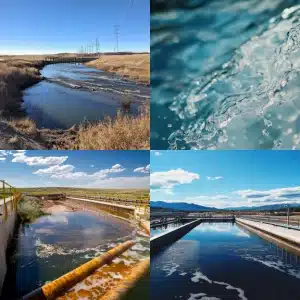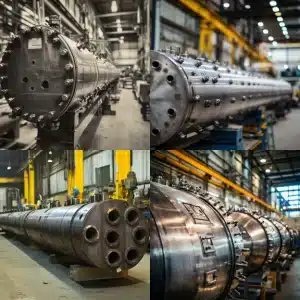
Structural failure analysis is a hands‑on engineering process for diagnosing why components fail through inspections, testing, design review, and simulation to prevent future breakdowns. It helps make structures stronger, safer, and more reliable by catching weak spots early.
Why How to Perform Structural Failure Analysis Is Important
If you want to know how to perform structural failure analysis, you’re in the right place. Whether working with pressure vessels or industrial structures, this practical process helps identify risks, prevent incidents, and extend equipment life. It’s a hands-on approach used by engineers and operations teams to keep systems safe and productive. By understanding core concepts, gathering the right data, and pinpointing causes, you can design stronger systems, reduce downtime, and improve safety, all with methods adaptable to your environment.
How to Perform Structural Failure Analysis
Structural failure analysis focuses on understanding why a component or system failed, such as cracks, deformation, or collapse, often seen in buckled bridges or split pressure vessels. While not every flaw can be detected early, analyzing failures helps identify patterns and implement measures to prevent repeats. This is especially critical for high-pressure systems where small defects can lead to major problems under stress. At Red River LLC, engineers use advanced technology, thorough testing, and prefabrication to minimize risks and ensure safety standards. By systematically reviewing design, gathering data, identifying root causes, and recommending improvements, you can enhance safety and protect long-term investments. If you are specifically focused on vessel-related incidents, you might also explore pressure vessel failure analysis.
Explore Core Concepts
Focus on Structural Integrity
Structural integrity is the ability of a component or structure to carry its intended load without unexpected deformation or collapse, influenced by material properties, design, and environmental factors. For example, a pressure tank holding corrosive fluids may require special coatings or alloys, while a structural beam might need extra bracing. Verifying structural integrity early is crucial to avoid hidden flaws. Modern design software and simulation tools help estimate loads and stresses before construction, but real-world testing and expert reviews remain essential. Companies like Red River LLC rely on skilled teams and advanced welding techniques to ensure products meet or exceed standards.
Identify Common Types of Failure
Structural failures can happen for a variety of reasons. By spotting common failure types, you can better zero in on prevention strategies. Some examples:
- Material fatigue: Repeated stress cycles can weaken metals or composites, causing micro-cracks that grow over time.
- Buckling: Slender columns under compression lose stability, appearing to bend or twist suddenly.
- Brittle fracture: Under extreme conditions, certain materials snap without noticeable plastic deformation.
- Corrosion: Gradual material loss or weakening from chemical reactions, common in harsh environments.
If you want to explore more on other failure modes, you could check out material failure analysis, or you might investigate mechanical failure analysis if you suspect issues with moving parts.
Gather Essential Data
Inspect Your System Thoroughly
A visual inspection is more valuable than often realized, allowing you to spot discoloration, deformation, or fatigue before testing. For pressure vessels, bulges or cracks near welds may indicate welding flaws, heat-affected zones, or design issues. Companies like Red River LLC emphasize consistent, methodical inspections combined with clear quality control and full material traceability to identify exact material batches. This detailed data makes root cause analysis more accurate by eliminating guesswork about metal grades or welding processes.
Test Materials
After an initial overview, conduct quantitative tests such as tensile tests to measure breaking force, hardness tests for resistance to indentation, and impact tests to assess behavior under sudden loads. Combined with chemical analysis, these tests verify if materials meet design requirements. If materials consistently fail, check if supplier certifications are adequate. Companies like Red River LLC use high-quality materials and ASME-certified processes to ensure pressure vessels meet standards. If corrosion is suspected, how to perform corrosion failure analysis might be an avenue to clarify testing methods.
Analyze Root Causes
Look at Design Issues
Design flaws can cause or speed up structural failures, especially if the geometry lacks support in high-stress areas or if the structure faces unexpected dynamic loads. In pressure vessels, design mistakes like insufficient thickness weaken the structure. Early detection of these issues can prevent costly redesigns or accidents. It is important to compare your design against industry standards such as ASME and local building codes to ensure safe thickness, weld sizes, and load distribution. A well-balanced design should be strong enough to handle operational stresses while remaining cost-effective and lightweight.
Review Manufacturing Processes
Structural integrity depends not only on design but also on manufacturing quality. Defects from improper welding or poor material handling can create hidden weaknesses like micro-cracks or incomplete weld penetration that worsen over time. Prefabrication in controlled environments, such as those used by Red River LLC, reduces risks related to environmental factors like humidity and dust, leading to fewer defects and more consistent quality. To further improve production methods, exploring how to perform mechanical failure analysis can provide valuable insights into optimizing manufacturing processes.
Develop Your Prevention Plan
Reinforce Design Elements
After identifying root causes of failure, strengthen your design by using higher-grade materials, adding cross-bracing, or improving corrosion protection. These upgrades may increase initial costs but help reduce future downtime and repair expenses. Small reinforcements like gussets or wind braces can significantly improve durability by distributing loads and protecting against environmental stresses, minimizing the risk of major failures.
Implement Regular Monitoring
Structural health monitoring uses sensors and real-time data to detect early warning signs of failure, allowing quick investigation of abnormal loads. Regular hands-on inspections complement this technology by catching visible issues fast. Together, these monitoring methods reduce guesswork and increase confidence in the structure’s ongoing safety and performance.
Explore Professional Support
Consider Specialized Expertise
Structural failure analysis can be complex and time-intensive, especially for large or complicated systems. Engaging specialized consultants or in-house experts who use tools like finite element analysis and fracture mechanics can help identify weaknesses precisely. Partnering with experienced organizations that combine design and manufacturing expertise can streamline the entire process from concept to completion, reducing repeated failures.
Use Advanced Simulations
Simulation software allows you to test designs under realistic operational conditions without risking physical components. It reveals hidden stress points and helps validate design improvements before implementation. Including human factors like operator training and usage limits in simulations ensures your design accounts for real-world conditions, increasing the chances of preventing future structural failures.
How to Perform Structural Failure Analysis for Safer Operations
Structural failure analysis protects your operation, personnel, and infrastructure by systematically gathering data through visual inspections, material tests, and detailed documentation. You then review design and manufacturing processes to identify root causes and recommend improvements like reinforcing weak areas or using better materials. Ongoing monitoring and advanced simulations help detect issues early. This method ensures every component, from welds to materials, can handle daily demands, helping you build stronger, more reliable structures over time.
Take Action Now: Protect Your Assets
Don’t wait for failure to cost you downtime or safety risks. Partner with Red River LLC for expert guidance on how to perform structural failure analysis and keep your structures safe, strong, and reliable.
Frequently Asked Questions
1.What is structural failure analysis?
Structural failure analysis is the process of investigating why a component or structure failed to perform as expected. It involves examining material properties, design, manufacturing, and operating conditions to identify root causes such as cracks, corrosion, or fatigue. The goal is to prevent future failures by understanding how and why the breakdown occurred.
2. Why is structural failure analysis important?
Structural failure analysis is important because it helps detect weak points and risks before they cause costly downtime, safety hazards, or environmental damage. It ensures compliance with industry standards, improves product reliability, and extends the lifespan of critical infrastructure, ultimately protecting people, assets, and operations.
3. How do you perform structural failure analysis?
Begin with a visual inspection, collect data, perform material tests, and use simulations to find stress points. Then analyze results to identify the root cause and suggest improvements.
4. When should structural failure analysis be conducted?
It should be done after a failure, during design validation, or when inspections reveal damage or aging components.
5. Who performs structural failure analysis?
Engineers or specialists in materials and structural design typically perform the analysis using inspections, testing, and simulations.
Key Takeaways
- Data collection is the foundation: Thorough documentation and testing keep you from making guesses.
- Design reviews matter: Even minor adjustments in geometry or materials can prevent catastrophic collapse.
- Manufacturing processes must be verified: Careless fabrication often creates hidden flaws that appear later.
- Ongoing monitoring is your safety net: In-place sensors and periodic inspections can reveal early warning signs.
- Collaboration boosts success: Partner with specialists or advanced teams for deeper insight and refined solutions.




